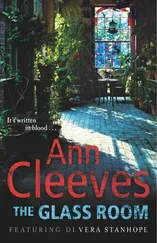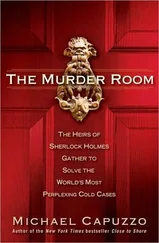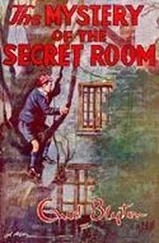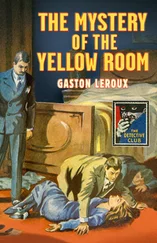The Shuffler was another occasional sighting. That was on the other side of the park, near the Baskin-Robbins on Geary where I worked in high school. The Shuffler walked at a normal gait and then suddenly his legs stirred into quick action, like he was a machine designed to buff the sidewalk, buff it with shoe soles. He slid and shuffled all the way down the block, paused, then went back to regular walking. It could have been a kind of disorder, a nerve thing, but it seemed like destiny. He was the man who broke into a shuffle on Geary, and then broke out of one.
Worked is a bit strong. We served ice cream and didn’t punch in all the sales on the register, took the stolen profits at the end of the night when we tallied our drawer. We hit the nitrous oxide tank that was used to fill whipped cream canisters. Mostly girls were employed there, and we let boys skateboard around inside the store, go behind the counter, help themselves to the nitrous tank, and scoop their own ice cream. We slopped water on the floor at the end of the night, to fulfill our duty to mop, after moving the clock forward, to close early. Place was run by kids, unsupervised, because the evening manager, a Scottish alcoholic named Helen, left early every day, after making the ice cream cakes, which was a specialized skill we did not possess.
———
The man in the bus shelter on Laguna Honda who wanted the Valium, it was his pushy optimism that alarmed me, the insistence of writing down his telephone number on a wall with the heel of his shoe. He needed his drugs and was ready to do business with a twelve-year-old girl. He needed to believe her, when it was plain she was probably lying.
———
Eva’s mom was white. Her dad was Filipino. Her mom was a heroin addict. Her dad was strict. He worked for a security service that had him posted at the entrance of the gigantic old Lucky Lager brewery in Bayview, which had closed down. We went there once, to get money from him. He crumpled it up and threw it at Eva and went inside the gates. A decade later, I was with some guys who broke into that place. My friends stole a bunch of equipment. One of them later returned with a rented backhoe, to take machinery that was too heavy to lift. Eva’s dad was retired by then. Eva was on the streets. Her mother was dead of an overdose. The Pall Mall was closed. The Scummerz were gone. The Sunset was transformed. The grocery store on Irving was gourmet. A girl I was friends with in high school worked the meat counter. People who looked like frat boys crowded the streets, wearing college sweatshirts and sipping health drinks out of giant Styrofoam containers. They even moved the old post office, which felt like a grievous insult. Everything got converted by money and I started to miss these grim places that offered no happy memories, but I wanted them back. The bars with sticky floors and French tickler dispensers in the bathrooms, like the Golden Grommet, which we called the Golden Vomit, for the old Irish men who slept in its doorway, waiting for it to open at seven a.m. I missed the lonely, unreliable streetcars, which now ding-dinged every eight minutes and were full of people in expensive shoes with careful hair.
The little shelter where I used to wait for the 44 on Laguna Honda had been fixed up. Gone was its piss stink and the pinkish-beige color of the retaining wall and shelter, which had been the same drab tone as the Youth Guidance Center beyond the bus stop, on top of the hill. YGC was called something else now, meant to seem kinder, more caring. The wall where the man had written with the heel of his shoe was painted over.
But what if that wall would not have been painted over, if by some miracle the numbers the man scratched on rough stucco were still there, bleeding through time, numbers he wrote with the shoeblack from his heel? Who would answer that phone line? And where is that man now? Where is the boy who was stirring at the stove on Masonic, the young Scummer, where is Leatherman, and where is Eva? Where is everyone, and what has happened to them?
No orange clothing
No clothing in any shade of blue
No white clothing
No yellow clothing
No beige or khaki clothing
No green clothing
No red clothing
No purple clothing
No denim of any kind or color
No sweatpants or sweatshirts
No underwire or metal parts on brassieres
Ladies must wear brassieres
No sheer or “see-through” clothing
No “layering”
No exposed shoulders
No tank tops or “cap-sleeved” tops
No low-cut tops
No unnecessarily exposed body parts—no half shirts or “low-waisted” pants
No logos or prints
No “capri” pants
No shorts
No skirts or dresses above the knee
No pants that are actually “long shorts”
No shirts without collars
All shirts must be tucked in
No jewelry (one “tasteful” wedding band is acceptable and will be inventoried by corrections officers at check-in)
No piercings
No bobby pins or metal clips in hair
Hair must be tidy and pulled back
No shower sandals
No flip-flops
No sunglasses
No jackets
No “over-shirts”
No “hoodies” nor any clothing with a hood
No tight clothing
Clothing must not be excessively loose or “baggy”
Appearance, hair, and clothing must be professional and in good taste.
Those who arrive to a state facility in inappropriate attire will be turned away and their inmate visit canceled.
If his students could learn to think well, to enjoy reading books, some part of them would be uncaged. That was what Gordon Hauser told himself, and what he told them, too. But there were days, like when one woman walked into the prison classroom and slung boiling sugar water into the face of another woman, that he did not believe it. There were days when it seemed like the real meaning of this work he was doing was to destroy his own life by trying to teach people who wanted to burn each other’s face off. The guards made everything more difficult, with their hatred of the women, and their hostility toward free-world staff like Gordon. The guards had been forced to undergo sensitivity training and were furious about it. “It’s because you cunts cry and demand explanations,” they said. “Everything with you bitches is why, why, why.” They all reminisced about the better times when they had worked in men’s facilities, where they watched high-blood-volume stabbings on closed-circuit monitors from the safety of the watch office, and dealt with prisoners who lived strictly by self-enforced convict codes. Female prisoners argued with guards and complained, and the guards seemed to find the way the women bickered with them, contested everything, more treacherous than having to subdue riots. No guard wanted to work in a women’s prison. Gordon had not understood this until he got to NCWF, which he’d chosen because it was commutable from Oakland, and because working with women seemed to him less threatening than a prison classroom of men.
His first placement had been with juveniles in San Francisco. He did that for six months, but it was too depressing. Kids in cages telling him stories about their foster homes, about sexual abuse, all kinds of abuse. Most didn’t have parents, but some did. Gordon saw them in the court’s waiting area, before he passed through a sally port to get to his classroom: people with holes in their sweatpants, T-shirts advertising random logos, inadequate shoes, poor people with chaotic lives. Couldn’t the juvenile judges see from looking at the guardians that the kids didn’t stand any kind of fair chance? There were signs to pull up your pants, because to wear them low was disrespectful. Gordon had a student who was always getting in trouble for having his pants too low. A big white boy whose eyes were spaced tight together in the center of his face. “You talk like you’re black,” a black kid had said to the white boy with his tight-stamped eyes, “but you look like you’re retarded.” NO BARE FEET, a sign at the building entrance warned. As if someone would try to come into a detention center and court, a municipal building on a bleak and windy corner, not close to the beach, without shoes. Another sign, NO TANK TOPS. Under it, typically, an entire three-generation family, all in tank tops, flesh spilling. And what was it about shoulders? What was law enforcement’s fear of shoulders?
Читать дальше








![О Генри - Меблированная комната [The Furnished Room]](/books/415396/o-genri-meblirovannaya-komnata-the-furnished-room-thumb.webp)
![О Генри - Комната на чердаке [The Skylight Room]](/books/415780/o-genri-komnata-na-cherdake-the-skylight-room-thumb.webp)


